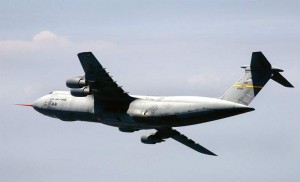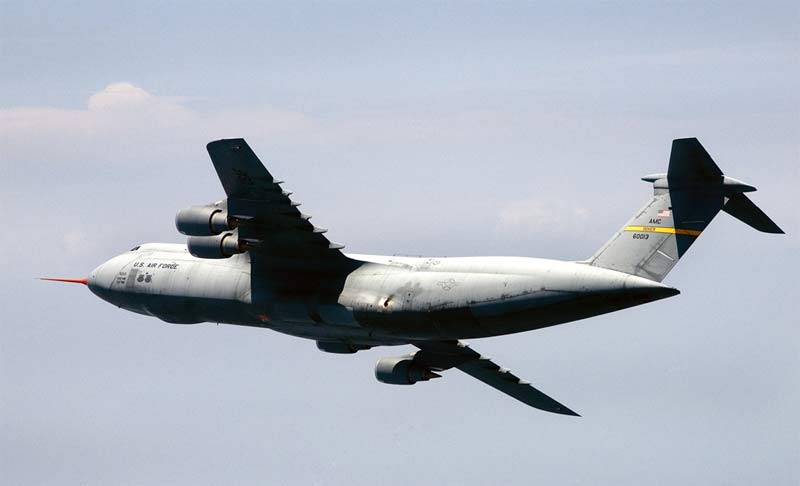
As the Obama Administration shapes the acquisition approach of the Department of Defense for the years to come, hard choices will be taken. And these choices will have significant impact both in implementing strategy and in shaping strategy for years to come.
Among the key drivers will be Afghanistan, Iraq and the operation and shape of power projection forces. First, how the Afghan strategy is re-cast and how US forces are equipped and the concept of operations of those forces in concert with those of allies will shape US capabilities for years to come. Second, the drawdown in Iraq, the re-deployment of the significant stash of equipment in Iraq to Iraq forces, within the region or returned to US forces in the United States or abroad will also have a shaping function on US and allied capabilities in the region. And, finally, how the Administration approaches the re-shaping of US expeditionary and power projection forces will have a fundamental impact on the US posture. The power projection forces shape how the US approaches allies, allies deal with the United States and will shape the calculations of adversaries with regard to the real military capability of the United States in global affairs.
Acquisition is inextricably intertwined with military capability. In the ongoing debate about acquisition processes and of the proper balance between industry, civilians and the military, what is often forgotten is that acquisition is about buying things. Too often the lawyer mentality of those shaping the process enforce the notion that process is more important than outcome. The critical question is the ability to buy the right equipment, at the right time, with the right effect and with core capabilities to sustain that equipment worldwide.
The press of financial limitations further complicates the challenge. Those limitations include: a crisis in financial resources, costly “overseas contingency operations,” a growth in numbers of military personnel reducing the resources available for equipment buys and sustainment, a shift in domestic priorities away from those represented by the Department of Defense, growing competition in global markets to sell US equipment, and the lingering impact of cacophony in US export policies which in the case of the satellite market have virtually eliminated US suppliers from the global competition.
At the heart of the challenge will be how to leverage austerity. The current strategic review process owes the country more than simply justifications for cancelling programs and supporting counter-insurgency operations. It owes the country some foundational principles for launching a new architecture and new programs to support U.S. and allied power projection forces providing for security and military needs.
One of these principles could be “leveraged” modernization whereby well-established platforms are leveraged to provide for new capabilities and to seek to connect these legacy platforms into new “connected battlespace capabilities.” One example is the USMC “Harvest Hawk” program. The USMC is using its KC-130Js to craft a roll-on, roll-off ISR platform. The USMC is looking to do the same with its Osprey’s. The program will yield an operational aircraft in less than a year.
Another example is the approach, which could be taken to the airlift fleet. Clearly lift is crucial for the future of US joint operations. There are clear limits to the amount of capital available for the acquisition of new lift aircraft; and as well there is significant uncertainly with regard to the future disposition of US kit to be carried by the lift fleet. When FCS was clearly in place, one could project with some certainty the nature of the future lift fleet. Such certainty is now gone.
And the tanker fleet was already supposed to be in the process of recapitalization. So the lift fleet needs to be modernized in the context of limitations for several years ahead on the numbers and capabilities of the tanker fleet. The new tanker fleet was designed to provide a refuelable tanker and such a fleet would allow new aircraft to operate at greater distance from the battlespace and for the tanking fleet to be able to be aloft for significantly great time and with much greater efficiency.
The USAF approach to C-5 modernization provides a solution to the lift and tanker shortfall problems. Here is a unique program that combines improved reliability, enhanced operational capability, fully capitalizes on an aircraft’s service life, while demonstrating good stewardship of the national treasury. According to a 2008 USAF estimate (which is the current program of record), for the mixed C-5 fleet (52 C-5Ms plus 59 AMP C-5As) there will be a reduction of operation costs by $15 billion and a Reduced Total Ownership Cost of $8.9 Billion.
The upgrade program for the C-5 consists of two elements.
The Avionics Modernization Program (AMP) provides a new cockpit including several flight safety enhancements and upgrades which allow it to operate in modern civil space. The modernized C-5 has appropriate data links to connect with air traffic control. These links allow reduced separation of aircraft to operate in regulated air space. By being able access optimized air traffic control routes, the C-5M gains fuel savings, time and can operate at longer distance.
The Reliability Enhancement and Re-Engining Program (RERP) updates 70 subsystems of the aircraft. The centerpiece of the RERP is a new General Electric Engine, which is used worldwide on civil aircraft and is found as well on Air Force One.. This allows access to GE worldwide engine system in offline locations.
This upgrade program not only virtually pays for itself through life cycle cost savings but yields new capabilities – leveraged modernization – which provides capabilities able to attenuate the tanker gap. As already noted, the C-5M is able to operate in civil airspace due to the avionics upgrades, which allows it to fly more efficient routes. The range of the aircraft allows it to avoid (or significantly reduce) re-fueling enroute (as compared to C-130s or C-17s), which means less tankers and less need to rely on enroute tanking infrastructure (notably enroute air fields).
And the modernized C-5Ms provide significant contributions to dealing with strategic uncertainty as well. The US will clearly need insertion forces to be able to operate worldwide in very time constrained environments whether for humanitarian or military missions. The C-5Ms will be able to carry significantly heavier loads over longer distance to more locations than ever before.
And the increased reliability of the C-5M will allow the USAF to use the C-5 in more austere runways than it currently feels comfortable to operate. The C-5 has significant capability to land in austere runways; with the new systems it can be considered a core contributor to this capability. The airplane has a landing gear footprint (LCN landing classification number) lower than C17 and comparable with the C130, which allows the aircraft to operate on soft semi prepared runways. This inherent capability allows you to go beyond how the USAF uses the aircraft. With more reliability from modernization, the tactical use of the C-5M can be expanded.
In other words, by modernizing the C-5, the C-5M will be able to carry more cargo, over longer distances, and with less air refueling tanker dependency. The C-5M delivers 22% more power, provides 58% faster climb rate and 8-20% better fuel economy, dependent upon the operational scenario. And the C-5M can expand its operations into airfields with shorter runways, thereby expanding its operational utility.
And the timelines of C-5 modernization and tanker shortfalls cross each other. The C-5 modernization program can be completed about 2015, which allows the tanker program to become launched and starting to deliver aircraft, which will enable the remainder of the lift fleet to operate more effectively. The C-5M can provide the broader reach without the tanker input; which then C-130s and C-17s can participate more effectively in a renovated tanker-enabled fleet.
In short, austerity requires innovation. Leverage current assets where possible to gain further capability combined with the re-capitalization of the power projection forces will provide mid to long-term solutions in a constrained environment. Obviously, finding the balance between the two will be the art of policy and the crux of policy choices. But programs like “Harvest Hawk” and C-5 modernization make sense as part of the solution.
The Reliability Enhancement and Re-Engining Program (RERP) updates 70 subsystems of the aircraft. The centerpiece of the RERP is a new General Electric Engine, which is used worldwide on civil aircraft and is found as well on Air Force One and KC-10 tankers. This allows access to GE worldwide engine system in offline locations.
This upgrade program not only virtually pays for itself through life cycle cost savings but yields new capabilities – leveraged modernization – which provides capabilities able to attenuate the tanker gap. As already noted, the C-5M is able to operate in civil airspace due to the avionics upgrades, which allows it to fly more efficient routes. The range of the aircraft allows it to avoid re-fueling in route (as compared to C-130s or C-17s), which means less tankers and less need to rely on in route tanking infrastructure (notably in route air fields).
And the modernized C-5Ms provide significant contributions to dealing with strategic uncertainty as well. The US will clearly need insertion forces to be able to operate worldwide in very time constrained environments whether for humanitarian or military missions. The C5Ms will be able to carry significant or heavy loads over long distance, which provides for either longer range for C-17 sized loads or simply bigger, bulkier or heavier loads.
And the increased reliability of the C5-M will allow the USAF to use the C-5 in more austere runways than it currently feels comfortable to operate. The C-5 has significant capability to land in austere runways; with the new systems it can be considered a core contributor to this capability. The airplane has a landing gear footprint (LCN landing classification number) lower than C17 and comparable with the C130, which allows the aircraft to operate on soft semi prepared runways. This inherent capability allows you to go beyond how the USAF uses the aircraft. With more reliability from modernization, the tactical use of the C-5M can be expanded.
In other words, by modernizing the C-5, the C-5M will be able to carry more cargo, over longer distances, and with less air refueling tanker dependency. The C-5M delivers 22% more power, provides 58% faster climb rate and 8-20% better fuel economy, dependent upon the operational scenario. And the C-5M can expand its operations into airfields with shorter runways, thereby expanding its operational utility.
And the timelines of C-5 modernization and tanker shortfalls cross each other. The C-5 modernization program can be completed about 2015, which allows the tanker program to become launched and starting to deliver aircraft, which will enable the remainder of the lift fleet to operate more effectively. The C-5M can provide the broader reach without the tanker input; which then C-130s and C-17s can participate more effectively in a renovated tanker-enabled fleet. (for a treatment of the C5 versus C17 acquisition issue see the piece by Loren Thompson http://www.lexingtoninstitute.org/c-5-versus-c-17-an-assessment-of-airlift-options?a=1&c=1171. In short, austerity requires innovation. Leverage current assets where possible to gain further capability combined with the re-capitalization of the power projection forces will provide mid to long-term solutions in a constrained environment. Obviously, finding the balance between the two will be the art of policy and the crux of policy choices. But programs like “Harvest Hawk” and C-5 modernization make sense as part of the solution.
An earlier version of this piece appeared on DOD Buzz (Buying Smart When Money is Tight).
———-
***Posted September 17th, 2009


